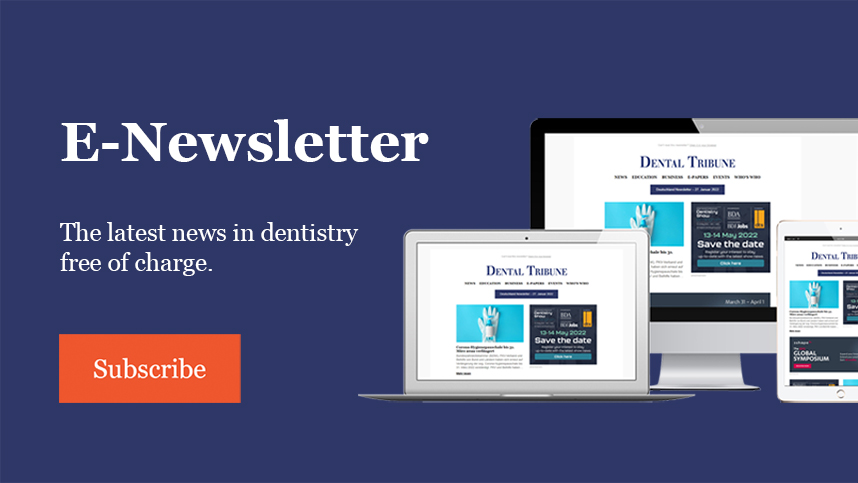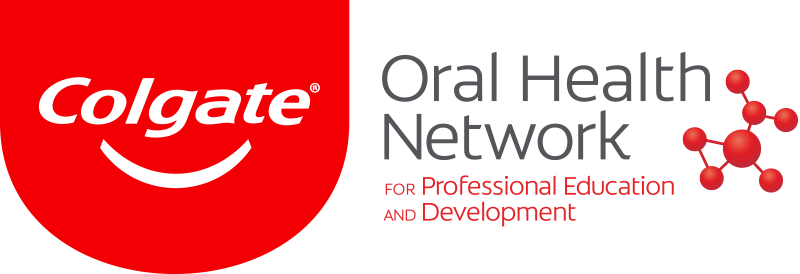FARMINGTON, Conn., US: Many factors may influence therapeutic decisions in orthodontics. For example, orthodontists may sometimes inaccurately interpret scientific data, and whether or not they will perform an invasive treatment or tooth extraction may not be based on objective criteria. Seeking to streamline orthodontic care, researchers from the US have recently invented an artificial intelligence (AI) tool that will give a second opinion and help clinicians choose the best treatment options for patients.
“If you get two orthodontists in a room, they will disagree on 50% of the patients they are diagnosing, to varying degrees,” Dr Madhur Upadhyay, an associate professor of orthodontics at the University of Connecticut School of Dental Medicine, said in a press release. “Everybody’s reading the same literature, but they are perhaps interpreting it in different ways. Artificial intelligence can do this job very nicely—assimilating the literature and then interpreting it in ways that are perhaps more accurate than how most of us will interpret it,” he added.
The novel algorithm uses data from a deep network of medical literature and expert decisions and indicates whether it agrees or disagrees with an orthodontist’s analysis, thus either validating the clinician’s diagnosis or pointing out a need for further consideration to determine the source of the discrepancy. In total, it provides 14 different primary and alternative treatment options.
Inaccurate diagnoses can result in dental problems such as jaw pain, bone loss and gingival recession, which may only develop years after prescribed treatment, making it difficult to establish a correlation. Dr Upadhyay believes that the AI tool could help steer clear of certain adverse effects of orthodontic treatment. “Suppose you took teeth out in a patient that did not need teeth to be taken out. Or suppose a patient required taking teeth out but you did not take teeth out. That can compromise the structural integrity of the teeth, the bone and the surrounding structures,” he commented.
Besides improving patient outcomes, the algorithm is planned to free up valuable time for providers, allowing them to diagnose more patients without compromising accuracy. The researchers have already sought the patentability and commercialisation of the AI algorithm.
“A significant amount of human power is wasted in doing mundane jobs like cropping figures, resizing figures, drawing some lines on them to interpret them—which are pretty basic things,” Dr Upadhyay noted. “A system should be automatically able to do it.”
Editorial note:
More information on the algorithm can be found here.
Tags:
The May 2019 edition of The Atlantic magazine contained an article titled “The truth about dentistry”. In it, the author visualised dentists—not a ...
LOS ANGELES, US/COLOGNE, Germany: Artificial intelligence (AI) software creator Pearl announced during the 2023 International Dental Show that it would be ...
COLOGNE, Germany: Continually striving for digitalisation in dental settings, GC announced the launch of two new solutions during the recent 40th ...
COLOGNE, Germany: DDH seeks to increase clinical utilisation of digital dentistry by developing digital dentistry solutions and services that employ ...
COLOGNE, Germany: After a large-scale update, Imagoworks, specialising in artificial intelligence (AI) digital dentistry, has newly released Dentbird Crown ...
For those who have been paying attention to the latest news in the technology space, you will most certainly have noticed that OpenAI recently launched ...
MELBOURNE, Australia: H3D, a leading provider of artificial intelligence-assisted CAD (AI CAD) to the hearing aid industry, has announced that it is now ...
NEUILLY-SUR-SEINE, France/COLOGNE, Germany: In France, only 35% of patients decide to go through with their treatment plan after a consultation with the ...
Live webinar
Fri. 26 April 2024
12:00 PM EST (New York)
Live webinar
Mon. 29 April 2024
12:30 PM EST (New York)
Prof. Roland Frankenberger Univ.-Prof. Dr. med. dent.
Live webinar
Tue. 30 April 2024
1:00 PM EST (New York)
Live webinar
Fri. 3 May 2024
1:00 PM EST (New York)
Live webinar
Tue. 7 May 2024
8:00 PM EST (New York)
Live webinar
Thu. 9 May 2024
8:00 PM EST (New York)
Live webinar
Mon. 13 May 2024
1:00 PM EST (New York)
Doc. MUDr. Eva Kovaľová PhD.



 Austria / Österreich
Austria / Österreich
 Bosnia and Herzegovina / Босна и Херцеговина
Bosnia and Herzegovina / Босна и Херцеговина
 Bulgaria / България
Bulgaria / България
 Croatia / Hrvatska
Croatia / Hrvatska
 Czech Republic & Slovakia / Česká republika & Slovensko
Czech Republic & Slovakia / Česká republika & Slovensko
 France / France
France / France
 Germany / Deutschland
Germany / Deutschland
 Greece / ΕΛΛΑΔΑ
Greece / ΕΛΛΑΔΑ
 Italy / Italia
Italy / Italia
 Netherlands / Nederland
Netherlands / Nederland
 Nordic / Nordic
Nordic / Nordic
 Poland / Polska
Poland / Polska
 Portugal / Portugal
Portugal / Portugal
 Romania & Moldova / România & Moldova
Romania & Moldova / România & Moldova
 Slovenia / Slovenija
Slovenia / Slovenija
 Serbia & Montenegro / Србија и Црна Гора
Serbia & Montenegro / Србија и Црна Гора
 Spain / España
Spain / España
 Switzerland / Schweiz
Switzerland / Schweiz
 Turkey / Türkiye
Turkey / Türkiye
 UK & Ireland / UK & Ireland
UK & Ireland / UK & Ireland
 International / International
International / International
 Brazil / Brasil
Brazil / Brasil
 Canada / Canada
Canada / Canada
 Latin America / Latinoamérica
Latin America / Latinoamérica
 China / 中国
China / 中国
 India / भारत गणराज्य
India / भारत गणराज्य
 Japan / 日本
Japan / 日本
 Pakistan / Pākistān
Pakistan / Pākistān
 Vietnam / Việt Nam
Vietnam / Việt Nam
 ASEAN / ASEAN
ASEAN / ASEAN
 Israel / מְדִינַת יִשְׂרָאֵל
Israel / מְדִינַת יִשְׂרָאֵל
 Algeria, Morocco & Tunisia / الجزائر والمغرب وتونس
Algeria, Morocco & Tunisia / الجزائر والمغرب وتونس
 Middle East / Middle East
Middle East / Middle East
:sharpen(level=0):output(format=jpeg)/up/dt/2024/04/Envista-names-Paul-Keel-new-CEO-1.jpg)
:sharpen(level=0):output(format=jpeg)/up/dt/2024/02/vVARDIS_article_1920x1080px.jpg)
:sharpen(level=0):output(format=jpeg)/up/dt/2024/04/Study-links-e-cigarette-use-with-increased-risk-of-heart-failure.jpg)
:sharpen(level=0):output(format=jpeg)/up/dt/2024/04/web_FDC_small.jpg)
:sharpen(level=0):output(format=jpeg)/up/dt/2024/04/web_Bassi.jpg)








:sharpen(level=0):output(format=png)/up/dt/2014/02/3shape.png)
:sharpen(level=0):output(format=png)/up/dt/2013/03/LM-Dental.png)
:sharpen(level=0):output(format=png)/up/dt/2013/04/Dentsply-Sirona.png)
:sharpen(level=0):output(format=png)/up/dt/2022/06/RS_logo-2024.png)
:sharpen(level=0):output(format=png)/up/dt/2023/03/ACTEON_NEW-logo_03-2024.png)
:sharpen(level=0):output(format=jpeg)/up/dt/e-papers/330729/1.jpg)
:sharpen(level=0):output(format=jpeg)/up/dt/e-papers/330727/1.jpg)
:sharpen(level=0):output(format=jpeg)/up/dt/e-papers/330725/1.jpg)
:sharpen(level=0):output(format=jpeg)/up/dt/e-papers/325039/1.jpg)
:sharpen(level=0):output(format=jpeg)/up/dt/e-papers/325007/1.jpg)
:sharpen(level=0):output(format=jpeg)/up/dt/e-papers/313543/1.jpg)
:sharpen(level=0):output(format=jpeg)/up/dt/2023/03/Artificial-intelligence-in-dentistry-Streamlining-orthodontic-care.jpg)

:sharpen(level=0):output(format=jpeg)/up/dt/2024/04/Envista-names-Paul-Keel-new-CEO-1.jpg)
:sharpen(level=0):output(format=jpeg)/up/dt/2024/03/profile-image-300x300.jpg)
:sharpen(level=0):output(format=jpeg)/up/dt/2023/04/Artificial-intelligence-A-gift-to-dentists_header.jpg)
:sharpen(level=0):output(format=jpeg)/up/dt/2023/03/Pearls-artificial-intelligence-solutions-are-coming-to-Europe.jpg)
:sharpen(level=0):output(format=jpeg)/up/dt/2023/03/GC-introduces-new-digital-solutions-at-IDS-2.jpg)
:sharpen(level=0):output(format=jpeg)/up/dt/2023/03/CEPPRO-Evolving-beyond-digital-orthodontic-diagnosis.jpg)
:sharpen(level=0):output(format=jpeg)/up/dt/2023/03/Imagoworks-propels-digital-dentistry-into-the-AI-era-at-IDS-2023-2.jpg)
:sharpen(level=0):output(format=jpeg)/up/dt/2023/03/230301_Artificial-intelligence-in-dentistry.jpg)
:sharpen(level=0):output(format=jpeg)/up/dt/2023/03/H3D-to-remedy-technician-shortage-with-AI-CAD-for-dental-laboratories_2.jpg)
:sharpen(level=0):output(format=jpeg)/up/dt/2023/02/Artificial-intelligence-for-dentists%E2%80%95improving-patient-and-practitioner-experience_1.jpg)






:sharpen(level=0):output(format=jpeg)/up/dt/2024/04/Envista-names-Paul-Keel-new-CEO-1.jpg)
:sharpen(level=0):output(format=jpeg)/up/dt/2024/02/vVARDIS_article_1920x1080px.jpg)
:sharpen(level=0):output(format=jpeg)/up/dt/2024/04/Study-links-e-cigarette-use-with-increased-risk-of-heart-failure.jpg)
:sharpen(level=0):output(format=jpeg)/up/dt/e-papers/330727/1.jpg)
:sharpen(level=0):output(format=jpeg)/up/dt/e-papers/330725/1.jpg)
:sharpen(level=0):output(format=jpeg)/up/dt/e-papers/325039/1.jpg)
:sharpen(level=0):output(format=jpeg)/up/dt/e-papers/325007/1.jpg)
:sharpen(level=0):output(format=jpeg)/up/dt/e-papers/313543/1.jpg)
:sharpen(level=0):output(format=jpeg)/up/dt/e-papers/330729/1.jpg)
:sharpen(level=0):output(format=jpeg)/up/dt/e-papers/330729/2.jpg)
:sharpen(level=0):output(format=jpeg)/wp-content/themes/dt/images/3dprinting-banner.jpg)
:sharpen(level=0):output(format=jpeg)/wp-content/themes/dt/images/aligners-banner.jpg)
:sharpen(level=0):output(format=jpeg)/wp-content/themes/dt/images/covid-banner.jpg)
:sharpen(level=0):output(format=jpeg)/wp-content/themes/dt/images/roots-banner-2024.jpg)
To post a reply please login or register